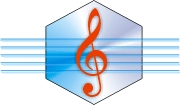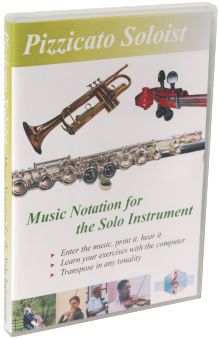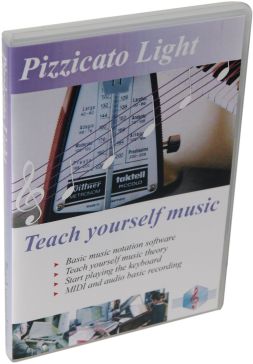Transposing a score
Transposition is a
function very much used in music. The principle is to move a
melody or a whole passage with accompaniment, higher or lower in
pitch. The passage sounds then higher or lower than the original
but keeps its original structure. The transposed melody is
recognized but identified as higher or lower than the original
tone. Transposition is much used
in the case of transposing instruments. These instruments have
the particular characteristic that when a note of a score is read
and played on them, the resulting sound is a note which is
different from the note on the score. For a B flat clarinet, if
the score shows the C note, the player activates the C keys on
his instrument, but the final sound is a B flat! Complicated? Indeed. It
adds a complexity. Useless? Yes and no. The
advantage is to use the same keys for several instruments of the
same family, considering the structure of these instruments,
which are wind instruments (clarinet, trumpet, saxophone…).
According to the complexity introduced, it was just moving a
difficulty to another field. It is therefore subjective and
relative. In any case, this situation is commonly accepted by
everyone and it would be difficult to change it: all the
concerned musicians should learn new note conventions, all
written scores should be modified and all music courses about
these instruments should be adapted. Thus it is humanly
impossible. So we keep it...! The result of such a
system is that when you write for a B flat clarinet, as you hear
one tone lower than what is written, the musician must read a
score that is written one tone higher, in order to adjust and
stay in harmony with the other instruments. There is where the
transposition function is very much used. How do you transpose with
Pizzicato? There are two possible methods. The first method is to
select the measures to be transposed. If you want to transpose
the whole score, you can select the Select all
item in the Edit menu. Then select Edit, Transpose...
A dialog box lets you to choose the transposition interval and
type of interval. See the following lesson for more details: www.arpegemusic.com/manual34/EN460.htm To better understand the interval
types, read the following page: www.arpegemusic.com/manual34/EN450.htm Let us take an example.
You have a score for violin (which is not a transposing
instrument) and piano. But you want the melody to be played with
a B flat clarinet. The piano score does not have to be changed,
but the melody will have to be transposed one major second higher
for the B flat clarinet. By using this
transposition method, the key signature (flats or sharps at the
clef location) remains unchanged. Thus some notes will bear
accidentals. For example, if you have a part in C major,
transposing it one tone higher will give a part in D major and
thus both F and C notes will have sharps on them. You can then
change the key signatures (with 2 sharps) in Pizzicato and the
individual sharps will be cleared and set to the key signature. The second method changes
the key signature and transposes the whole score directly. Let us
take the example of a horn in F. When it reads a C, this
instrument produces an F note (a fifth lower than C). If you have
a score for cello (which is not a transposing instrument) and
want to make it play with a horn in F, it should be transposed a
perfect fifth higher. A piece written in major C will have to be
transposed in G major, therefore with F# at the key, in order to
compensate for the natural transposition of the horn. You can
apply a change of the key signature with the Pizzicato key
signature tool and select the new key signature in the menu (G),
which will add a sharp to it. Check the box "Transpose
notes" and Pizzicato will transpose your score. According to the interval
of the transposing instrument, it is possible that you must
modify the octave with the first method, because Pizzicato will
transpose the notes to the nearest octave.

All rights reserved for all countries
Pizzicato is a trademark owned by Arpege sprl





























